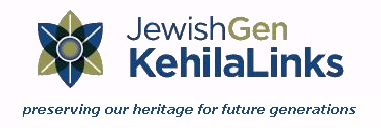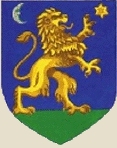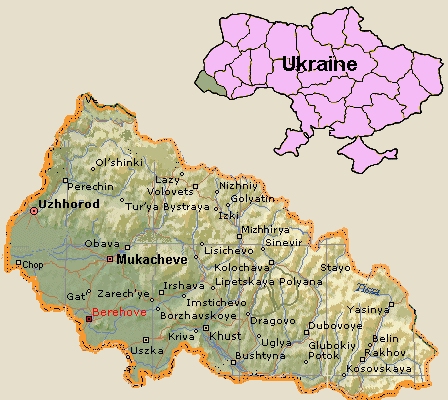|
||||||||
| also known as: Beregszász [Hun], Berehovo [CZ], Beregovo [Rus] 48°13' N / 22°39' E | ||||||||
| ~ Introduction ~ |
||||||||
|---|---|---|---|---|---|---|---|---|
| ( Turn speaker on & Click the arrow in the buttons |
||||||||
|
||||||||
| ~ Maps ~ |
||||||||
| Zakarpats'ka oblast, Ukraine Map: Copyright ©2010 by Marshall J. KATZ |
||||||||
|
||||||||
| NOTE: Clicking a link will open a new page. |
||||||||
|
||||||||
| ~ History ~ |
||||||||
| Berehove was mentioned for the first time as a royal town with the name of Lampertsas in a Latin text dated 1247. In 1284, it was mentioned as Beregsas, derived from the Slavonic words of berek-wood and sas-a German tribe. Later, Beregszász, as it was called, was in Hungary. Szász means Saxons. |
||||||||
| The territory of the town has been inhabited for ages. Legend is that Lampertháza (villa Lamperth), owned by Prince Lampert, the son of King Béla I, ruled the territory after the death of the king. The settlement was devastated in 1141 by the Cumanians and Petschenegs. |
||||||||
| In 1247, the new Saxonian settlers from the Rhine Lands gave it the name of Lampertszásza, a city and it became a Free Royal City in 1342. |
||||||||
| The town name of Beregszász was used first in 1504. |
||||||||
| On 17 June 1657, Beregszász was set on fire by the Polish and in 1686, it was destroyed by the Hapsburg Army. |
||||||||
| In 1768, a Jewish settlement was established and four Jewish families were recorded and by 1830, the Jewish population grew to 200. |
||||||||
| By 1877, the population of Beregszász was 6,929 made up of Hungarians, Rusyns, Germans and Jews which comprised Roman Catholic (1,516), Greek Catholic (824), Eastern Orthodox Catholic (7), Agnostic (25), Reformed (2,762) and Jewish (1,795 - 26% of the total). |
||||||||
| In 1910, Beregszász was a town and the capital of Bereg County. In 1910, the inhabitants numbered 12,933; 12,432 (96,1%) Hungarian, 221 (1,7%) Ruthenians, 140 (1,0%) German and 140 (1,0%) others by mother tongue. The religious distribution in 1910 was 4,344 (33,6%) Calvinist, 3,909 (30,2%) Jewish, 2,724 (21,1%) Roman Catholic and 1,956 (15,1%) other (most of whom were Greek Catholic). |
||||||||
| By 1921, the Jewish population grew to 4,592 and by 1941, the Jewish population was 5,865 (30% of a total 19,379 inhabitants). |
||||||||
| In addition to trade and crafts, Jews were represented in the professions (22 doctors, 17 lawyers) and they also owned two banks, 16 factories and three flour mills. A few dozen Jewish families worked on three Jewish farms. |
||||||||
| The Treaty of Trianon allocated it to Czechoslovakia (Sub-Carpathia) as Berehovo, but after the Decision of Vienna (1938), the city again became Beregszász, part of Hungary. A few dozen Jews emigrated to Palestine before Hungary annexed the city in fall 1938. |
||||||||
| After WWII, the Treaty of Paris (1947) allocated the city to the Ukrainian Soviet Socialist Republic (1945-1991) as Beregovo, based on the Soviet-Czechoslovakian Agreement. Since 1991, it has been part of the Ukraine and known as Berehove. |
||||||||
| The city of Berehove is situated on the banks of the Verke, a small river connecting the river Borzhava with the Latorica river. The nearby mountains have its slopes planted with vineyards. The area is known for its old traditions cultivating grapes and wine production. Transcarpathian branded wines are normally bottled in the Beregovskaja wine factory. Berehove is also known for other industries such as furniture, instruments, sewing and other trades. |
||||||||
| Today, the city is the center of the Hungarian inhabitants in Transcarpathia (46% of a total 29,110 inhabitants - 1990 census) and they have proposed becoming a Hungarian Autonomous District (referendum 01.12.1991). The city has one Russian, two Ukrainian and three Hungarian high schools; one Ukrainian and one Hungarian grammar school; one professional and one medical school. There is a professional Hungarian national theater and an amateur folk theater. |
||||||||
| Of particular note, all of the clocks in Berehove are set to Hungarian time (1 hour behind the Ukraine) and Hungarian is the prevailing language. Also, Berehove is a border crossing point from the Ukraine to Hungary that is not as busy as the Chop (Csap) border crossing. You'll need to keep that in mind should you have the occasion to visit Berehove. |
||||||||
| Very few Jews live in Berehove today (2010). |
||||||||
Notable citizens:
|
||||||||
|
||||||||
| ~ Hungarian Melody: "Beregszász" ~ Szöveg (Artist): Ottó SHÓBER Zene (Music): Vlagyimir BALÁCZKY |
||||||||
| Click the black arrow below to listen to the song. |
||||||||
| This page is hosted at no cost to the public by JewishGen, Inc., a non-profit corporation. If you feel there is a benefit to you in accessing this site, your JewishGen-erosity is appreciated. |
| Compiled and created by: Marshall J. KATZ, USA with assistance from Beregvideki Museum, Berehove Book: Berehovo, Beregszáz, Zsidósága Képekben M.Y. EHRENREICH, USA Leo FEIGENBAUM, USA Genealogy Indexer hwd Media Share Dov GUTTERMAN, Israel Hungarian Banknote Catalogue FOTW - Flags Of The World Hungarian Bibliographical Lexicon JW Player Karpatinfo.net Nikoli KATZ, USA Magic Toolbox Rabbi Joel MEISELS, USA Memorial Museum of Hungarian Speaking Jewry, Israel István MOLNÁR, Ukraine National Library of Australia Nevek-Klarsfeld Dima PILIPENKO, Ukraine Sefone Project Mathew SHUGART, USA David WEINSTOCK, USA Wikipedia www.o2-Photo.com Yad Vashem Archives YouTube Amos Israel ZEZMER, France and the following JewishGen members/descendants and contributors of Berehove Jewish families: Iris (née GOLDBERG) BASS, USA Tova BECK-FRIEDMAN, USA Mary BLUMENSTEIN, Australia Reuven (Ray) BOXMAN, Israel Eva (née BRAUN) BERKOVITS, Israel Sydelle (née WEISS) COHEN, USA M.Y. EHRENREICH, USA Gabor FARKAS, Switzerland Michael and Linda FARKAS, Netherlands David FRIEDMAN, USA Bracha (née BECK) GHILAI, Israel Stephen GOLD, USA Dr. Tamás GOLDBERGER, Hungary Erica GOLDENBERG, USA Fred GROSS, USA Hugo GUTMAN, USA [The family of] Jehoshua HALEVY, Israel Dr. Yehuda HEIMLICH, Israel Daniel KATZ, USA Nikoli KATZ, USA Rudolf "Milu" KATZ, USA Samuel (Sasha) KATZ, USA Kati KISS, Israel Jill KLEIN, USA Michael J. KUBAT, USA Dr. Bruce LEIMSIDOR, Italy Yitzhak LIVNAT, Israel Avrom Shaya MALIK, USA Julian REINHEIMER, USA Betty L. ROSEN, USA Sandor SCHECHTER, USA Roslyn SNOW, USA Ari TESLER, Belgium Joseph VAYS, USA Tibor WEISS, USA |
|
Updated: June 2020 |
|---|
| Copyright ©2010 Marshall J. Katz All rights reserved. |
|
||||||||||
| Visitors since: 28 August 2010 |
|---|





